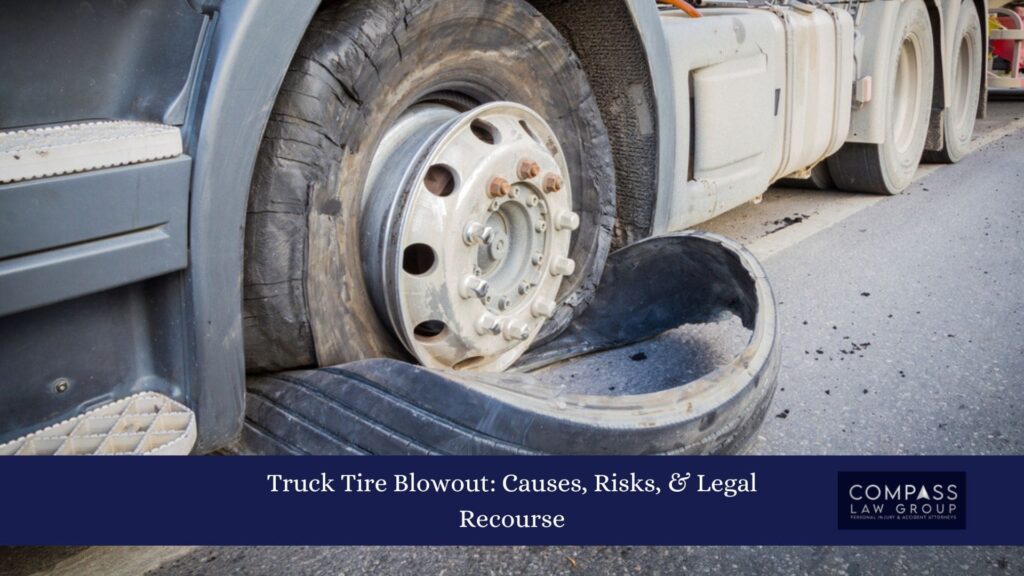
A tire blowout is a terrifying experience for any driver. The sudden loss of pressure in a tire can lead to a loss of control, potentially causing an accident and significant damage to your vehicle. Understanding the causes, potential damage, and immediate actions to take after a blowout is crucial for ensuring your safety and minimizing the impact on your car. This article will delve into these aspects, providing you with the knowledge needed to navigate this challenging situation effectively.
This article will explore the various factors that contribute to tire blowouts, examine the potential damage they can inflict on your vehicle, and outline the risks associated with them. We’ll also provide a step-by-step guide on immediate actions to take after a blowout and emphasize the importance of thorough vehicle inspection following the incident.
Tire Blowout Causes
Several factors can contribute to a tire blowout, often stemming from wear and tear, improper maintenance, or external factors.
Underinflation:
Driving with tires that are underinflated puts excessive stress on the sidewalls, making them more susceptible to punctures and blowouts. Regularly checking your tire pressure and maintaining it at the recommended level is crucial for preventing this issue.
Overinflation:
While underinflation poses a risk, overinflating your tires can also lead to blowouts. Overinflated tires have less contact with the road surface, making them more vulnerable to impacts and punctures. It’s important to find the sweet spot for tire pressure, as recommended by your vehicle manufacturer.
Wear and Tear:
Tires naturally wear down over time due to friction and exposure to various road conditions. As tires age, their tread depth decreases, weakening the structural integrity of the tire and increasing the risk of a blowout. Regularly inspecting your tires for signs of wear and tear, such as cracks or bulges, is essential for early detection and prevention.
Punctures and Foreign Objects:
Sharp objects embedded in the road can puncture tires, causing immediate deflation or leading to gradual air leakage that eventually results in a blowout. Driving cautiously and avoiding potholes and debris-filled areas can help minimize this risk.
Damage from a Tire Blowout
A tire blowout can cause significant damage to your vehicle, potentially impacting various components like the wheel rim, suspension system, and even the frame.
Wheel Rim Damage:
The sudden force of a blowout can severely impact the wheel rim, causing bending or cracking. This damage can compromise the structural integrity of the wheel, making it unsafe for further use.
Suspension System Damage:
The abrupt loss of tire pressure during a blowout can put immense stress on the suspension system, potentially damaging components like control arms, ball joints, and shock absorbers. These damages can affect your vehicle’s handling, stability, and overall performance.
Frame Damage:
In severe cases, a tire blowout can cause enough force to damage the vehicle’s frame. This type of damage is often difficult to repair and may require extensive welding or replacement of structural components.
Risks of a Tire Blowout
A tire blowout poses significant risks to both the driver and other road users.
Loss of Control:
The sudden loss of tire pressure during a blowout can cause your vehicle to veer sharply, making it difficult to maintain control. This loss of control increases the risk of an accident, potentially leading to collisions with other vehicles, pedestrians, or objects.
Accidents and Injuries:
Tire blowouts are a major contributing factor to accidents on the road. The sudden loss of traction and control can result in rollovers, head-on collisions, or side impacts, causing serious injuries or even fatalities.
Property Damage:
Beyond personal injury, tire blowouts can cause significant property damage. Collisions resulting from a blowout can damage vehicles, buildings, fences, and other infrastructure.
Immediate Actions After a Blowout
If you experience a tire blowout, it’s crucial to remain calm and take immediate action to ensure your safety and minimize further damage.
Steer Safely:
Resist the urge to slam on the brakes as this can cause your vehicle to skid or spin out of control. Instead, gently grip the steering wheel and steer in a straight line, gradually slowing down.
Activate Hazard Lights:
Immediately turn on your hazard lights to alert other drivers of your situation and reduce the risk of further collisions.
Safely Exit the Vehicle:
Once you’ve come to a complete stop in a safe location, carefully exit your vehicle and move away from traffic. Avoid standing near the damaged tire as it may be unstable.
Call for Assistance:
Contact roadside assistance or emergency services to report the incident and request help with changing the tire or towing your vehicle to a repair shop.
Vehicle Inspection After a Blowout
After a tire blowout, it’s essential to thoroughly inspect your vehicle for any potential damage.
Check Tire Pressure:
Inspect all tires for proper inflation and ensure they are at the recommended pressure levels. If you notice any signs of damage or uneven wear, replace the affected tires immediately.
Examine Wheel Rims:
Carefully examine the wheel rims for any bending, cracking, or other signs of damage. If you find any issues, have the rims inspected by a qualified mechanic and consider replacing them if necessary.
Inspect Suspension System:
Visually inspect the suspension system components, such as control arms, ball joints, and shock absorbers, for any visible damage or leaks. If you notice anything unusual, consult a mechanic for further evaluation.
Conclusion
A tire blowout can be a frightening experience with potentially serious consequences. Understanding the causes, risks, and immediate actions to take after a blowout is crucial for ensuring your safety and minimizing damage to your vehicle. By following the guidelines outlined in this article, you can navigate this challenging situation effectively and protect yourself and others on the road. Remember to prioritize regular tire maintenance, including pressure checks and inspections for wear and tear, to prevent blowouts and ensure safe driving conditions.
